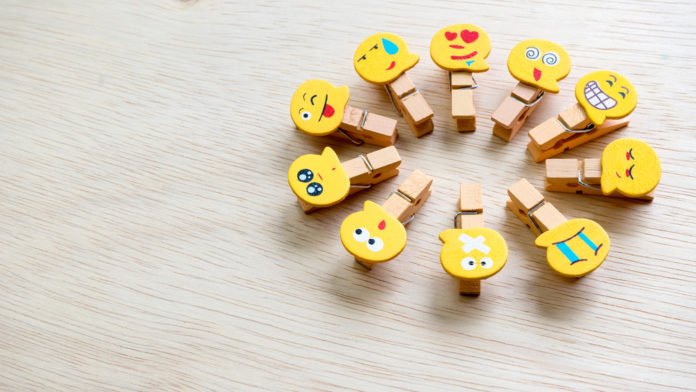Human emotions fall within the universal categories: happiness, sadness, anger, surprise, fear, and disgust. But a new study by the UC Berkeley scientists suggests human emotions fall within 27 kinds of emotions. They also have created a multidimensional, interactive map to show how they’re connected.
Senior author Dacher Keltner said, “We found that 27 kinds of emotions, not six, were necessary to account for the way hundreds of people reliably reported feeling in response to each video.”
“Moreover, in contrast to the notion that each emotional state is an island, the study found that there are smooth gradients of emotion between, say, awe and peacefulness, horror and sadness, and amusement and adoration.”
“Our hope is that our findings will help other scientists and engineers more precisely capture the emotional states that underlie moods, brain activity, and expressive signals, leading to improved psychiatric treatments, an understanding of the brain basis of emotion and technology responsive to our emotional needs.”
Scientists recruited the group of 853 men and women. They then view a random sampling of silent 5- to-10-second videos planned to bring out a wide scope of feelings. The video clips were arranged from various sources which involve births and babies, weddings and proposals, death and suffering, spiders and snakes, physical pitfalls and risky stunts, sexual acts, natural disasters, wondrous nature, and awkward handshakes.
After watching videos, scientists asked participants to complete reporting task. Three separate groups of study participants completed the reporting. The first group reported their emotional responses to each 30 video clips.
The second group ranked each video according to how strongly it made them feel admiration, adoration, aesthetic appreciation, amusement, anger, anxiety, awe, awkwardness, boredom, calmness, confusion, contempt, craving, disappointment, disgust, empathic pain, entrancement, envy, excitement, fear, guilt, horror, interest, joy, nostalgia, pride, relief, romance, sadness, satisfaction, sexual desire, surprise, sympathy, and triumph.
Cowen said, “Their responses reflected a rich and nuanced array of emotional states, ranging from nostalgia to feeling ‘grossed out’.”
Almost half of the participants gathered the similar response. They reported the same category of information for each video. The last companion evaluated their response on the scale of 1 to 9 for every 12 videos. Their responses were based on differences like positive versus negative, excitement versus calmness, and dominance versus submissiveness.
Scientists predicted how participants scored the videos based on how previous participants had assessed the emotions the videos elicited. Means, participants shared the same or similar emotional responses to each of the videos.
By providing a wealth of data, scientists identified 27 kinds of emotions. In addition, by using statistical modeling and visualization techniques scientists organized the emotional responses on the map.
Cowen said, “We sought to shed light on the full palette of emotions that color our inner world.”
To view hundreds of video clips, click on the image above to get to the interactive map and move cursor over the map’s colored letters. (Courtesy of Alan Cowen)